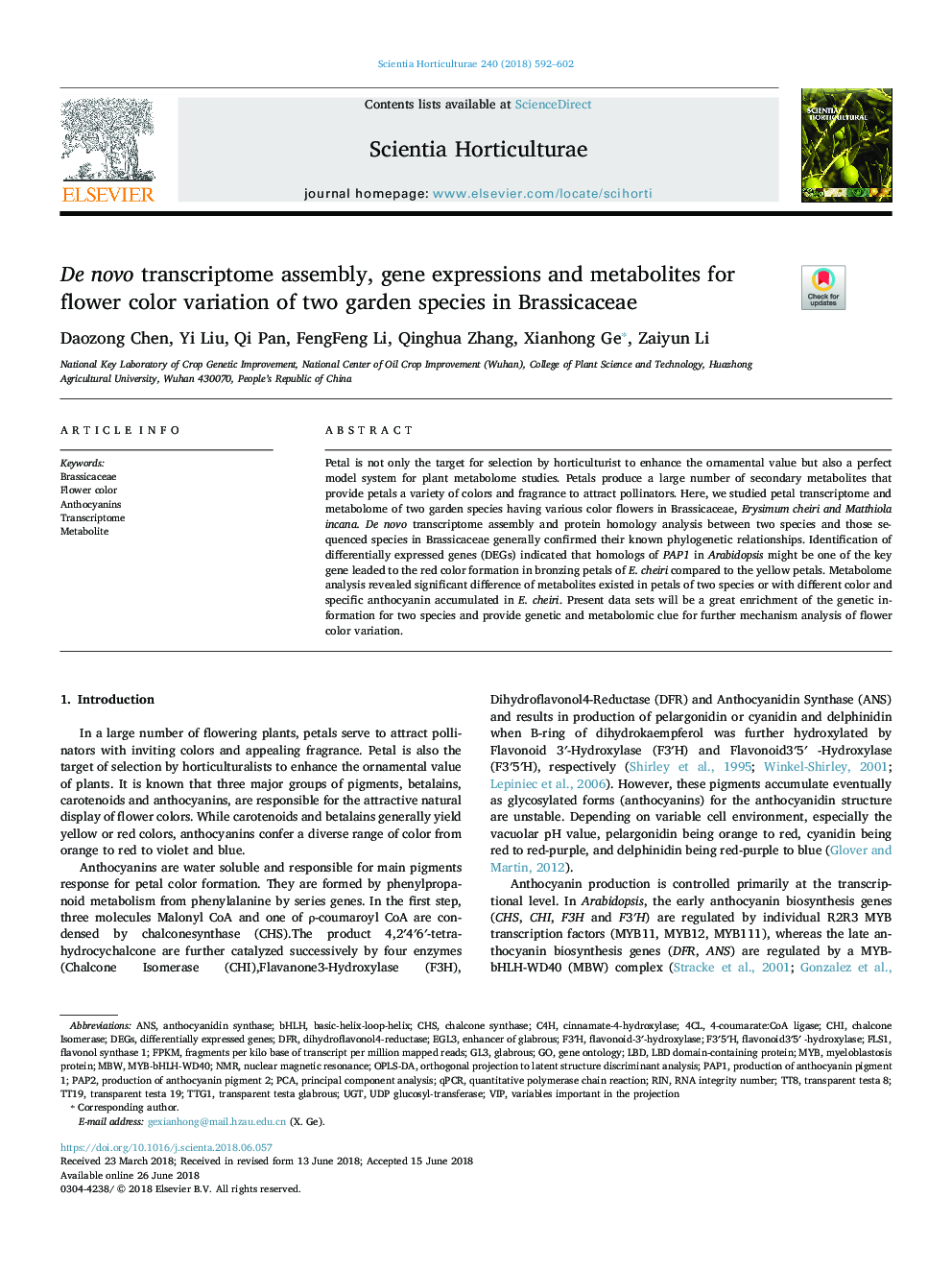| Article ID | Journal | Published Year | Pages | File Type |
|---|---|---|---|---|
| 8892437 | Scientia Horticulturae | 2018 | 11 Pages |
Abstract
Petal is not only the target for selection by horticulturist to enhance the ornamental value but also a perfect model system for plant metabolome studies. Petals produce a large number of secondary metabolites that provide petals a variety of colors and fragrance to attract pollinators. Here, we studied petal transcriptome and metabolome of two garden species having various color flowers in Brassicaceae, Erysimum cheiri and Matthiola incana. De novo transcriptome assembly and protein homology analysis between two species and those sequenced species in Brassicaceae generally confirmed their known phylogenetic relationships. Identification of differentially expressed genes (DEGs) indicated that homologs of PAP1 in Arabidopsis might be one of the key gene leaded to the red color formation in bronzing petals of E. cheiri compared to the yellow petals. Metabolome analysis revealed significant difference of metabolites existed in petals of two species or with different color and specific anthocyanin accumulated in E. cheiri. Present data sets will be a great enrichment of the genetic information for two species and provide genetic and metabolomic clue for further mechanism analysis of flower color variation.
Keywords
DEGsEGL3PAP2TTG1Pap1GL3glabrous4CLFPKMOPLS-DAMBWbHLHDFRVIPUGTC4HqPCRCHSLBDCHIBrassicaceaenuclear magnetic resonance4-Coumarate:CoA ligaseF3′5′HF3′HPCAAnthocyaninsBasic-helix-loop-helixPrincipal component analysisTranscriptomeNMRFlower colorRINANSanthocyanidin synthasechalcone synthaseCinnamate-4-hydroxylaseRNA Integrity NumberMybMetaboliteGene ontologyquantitative polymerase chain reactionDifferentially expressed geneschalcone isomerase
Related Topics
Life Sciences
Agricultural and Biological Sciences
Horticulture
Authors
Daozong Chen, Yi Liu, Qi Pan, FengFeng Li, Qinghua Zhang, Xianhong Ge, Zaiyun Li,
